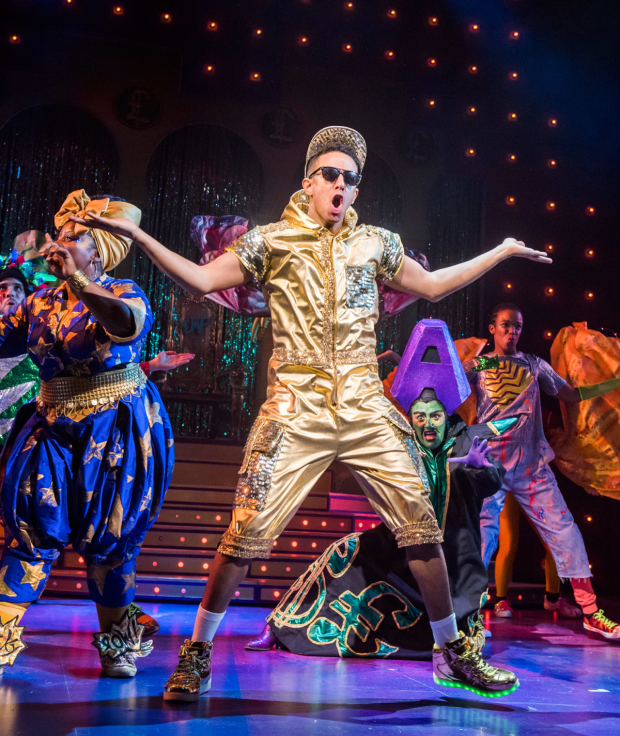Pantos are vital for audiences and artists alike

©Tristram Kenton
Pantomime has, essentially, been privatised over the years. What was always a moneyspinner – Christmas being the one time of year when families head to the theatre en masse – retains its rich pickings, but the shows that used to bolster the coffers of regional reps are, these days, more likely to be found playing at the large receiving house down the road. If you want a reason for the historic decline of regional theatre over the years, look no further than that.
The rep’s pantomimes have been supplanted by big owner-operators. Between them QDOS Entertainment and Ambassadors Theatre Group produce almost 40 pantos around the country – a huge logistical challenge as shows are updated and rotated around the country. It’s no real secret that these are off-the-peg efforts – the same sets rolled out of storage year on year, the same costumes adjusted for a new set of stars. For evidence, look at the identikit posters: same font, different celebs.
Pantomime is, without doubt, big business. It’s even taken root in the West End this year. The London Palladium, which has struggled to find a long-term tenant to fill its 2,200, has a Cinderella in residence for the Christmas period.
It's a shame that pantos are left mainly to independent producers
While some have held onto their traditional pantos – big hat-tips to panto vets Berwick Kaler in York and Kenneth Alan Taylor in Nottingham – many of the old regional reps have reverted to alternatives, either seasonal shows like The Snow Queen at Bristol Old Vic or family fare as with Birmingham Rep’s Treasure Island. Panto, for the most part, is left to independent producers.
That’s a shame – and not just because funding cuts make strong box-office takings all the more necessary today. It’s a shame because pantos are vital for audiences and, counter-intuitive though it might seem, for artists alike.
Pantomime has always been a key part of getting people into theatre – an introduction for audiences at an early age. It is genuinely egalitarian too, an art-form enjoyed across social and class divides with audiences drawn from all ages – a genuinely communal experience. It is also a source of real local pride, even rivalry – another key tenet in theatres’ roles today. On Saturday night, as a drum rolled across the Lyric Hammersmith stage, a groan went up from the stalls. The audience saw it coming a mile off, because it comes every time. "Eight years we’ve been doing that gag," sighed James Doherty’s dame. That’s the mark of a lasting relationship with an audience; the same faces cracking the same gags to the same audiences – a proper act of sharing.
If the benefits for audiences and organisations are obvious, what about artists? Last week I saw the designer Ian MacNeil – he of the collapsing house in An Inspector Calls – address a group of six-form students. He made a fascinating case – that the panto resurgence was making British theatre better. Having recently been to see Shopping and Fucking at the Lyric, he drew a direct line between that show and the theatre’s annual panto. In its contemporary self-awareness of the theatrical event – auctioning off premium seats and prosecco, handed key speeches to audience members – he saw the same relationship as in panto.
Pantomime has always been a key part of getting people into theatre
The Lyric is prone to poking fun at itself in panto. This year’s comes with Brecht references and rolls its eyes at the rest of the programme. Doherty even tuts at the sweary shows on the same stage a few weeks before.
It’s telling, though that Aladdin is written and directed by members of the Lyric’s Secret Theatre crew – playwright Joel Horwood and new Gate AD Ellen McDougall. These are contemporary theatremakers freshening up an old form, but learning from it in the process.
McDougall told me recently that she doesn’t delineate. All theatre, for her, should exist as "a direct conversation" with its audience and panto is nothing if not that. It thrives on the frisson between reality and representation in the live event – all that interaction, slapstick and drag.
It is, she says, all about tipping the audience the wink. "In panto, you’re always yourself: an actor playing a character at the same time. I use that a lot in the work I make – even if it’s a fourth wall play." The key to contemporary work, in other words, "is knowing that it’s a piece of theatre – that’s the starting point." Panto is, at heart, always a public event, and that’s the very essence of theatre.











